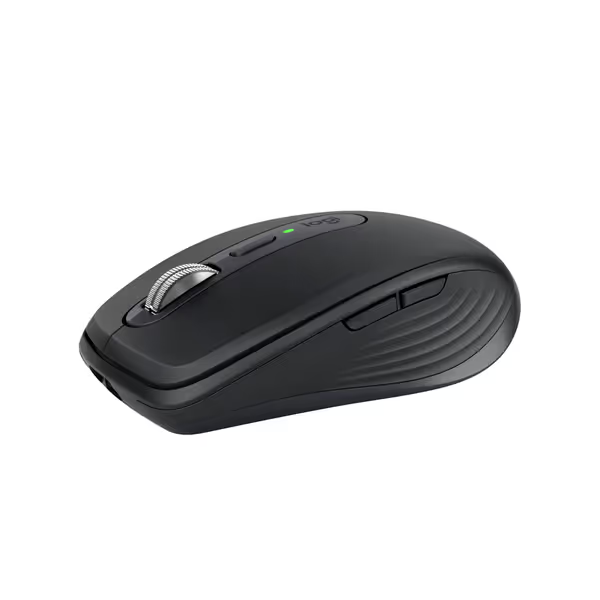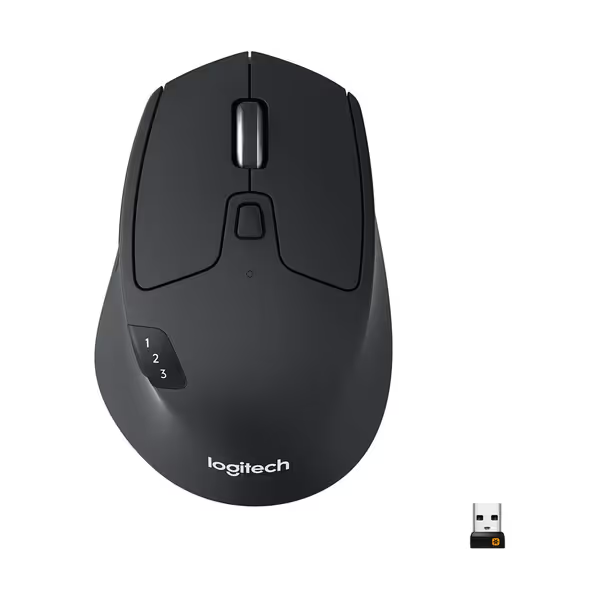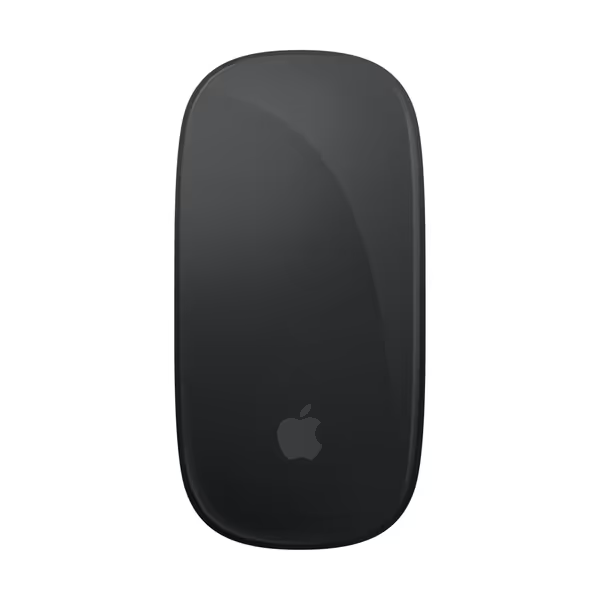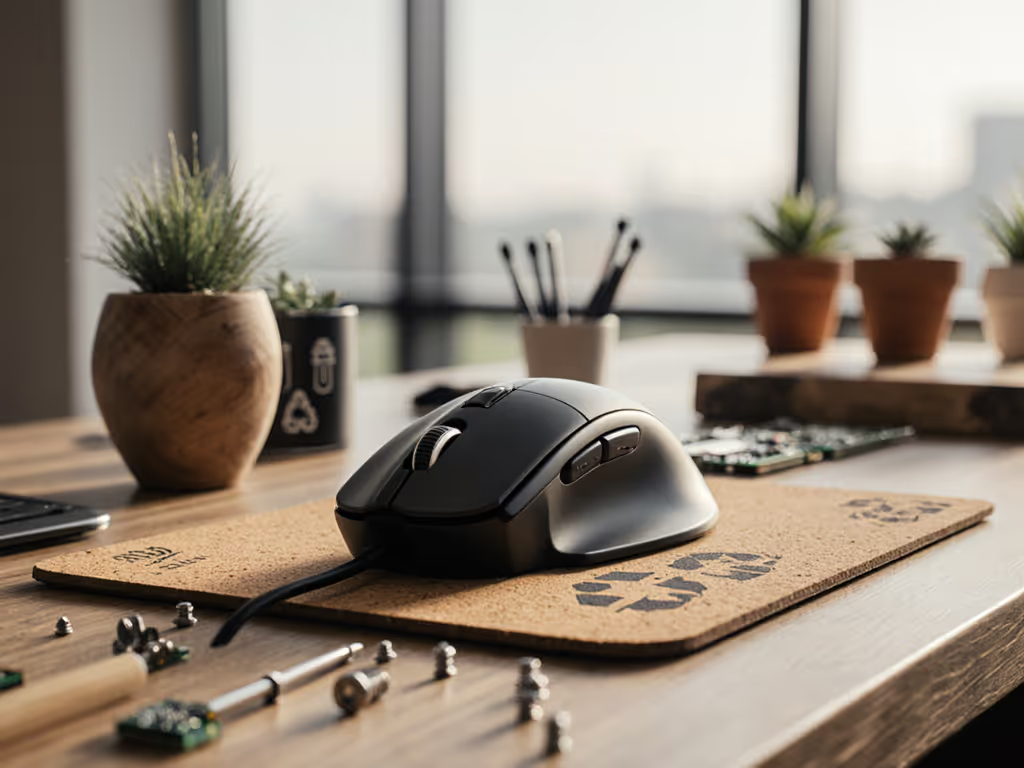
Best Wireless Mouse for Travel: Business-Ready Portability

When your work life spans multiple devices and locations, finding the best wireless mouse that transitions seamlessly becomes critical. The right travel mouse isn't just about portability; it's about preserving your workflow rhythm when switching between a Mac at home, Windows at the office, or a tablet on the plane. For knowledge workers who regularly juggle OS ecosystems, a reliable mouse that reduces cognitive load through logical inputs can make the difference between productive flow and constant context-switching drag.
I remember the days of carrying separate shortcut maps for my Wacom tablet, macOS system controls, and Windows CAD environment. Task-switching felt like mental gymnastics until I discovered system-mapping principles that let one mouse mirror my intent across platforms. Now, as a workflow architect evaluating driver stability and cross-platform schemas, I've found travel mice that don't just move your cursor; they preserve your mental bandwidth.
Why Most "Travel Mice" Fail Business Professionals
The travel mouse market is flooded with compact designs that prioritize size over functionality. But for knowledge workers who live in spreadsheets, design software, or code editors, a mouse that sacrifices thumb buttons or horizontal scroll for portability creates more friction than it solves. True business-ready portability means:
- Multi-device switching that works without software logins or dongle conflicts
- Driver reliability that doesn't require reinstalling between OS handoffs
- Thumb cluster logic that maps consistently across Windows, macOS, and Linux
- Battery predictability that won't die during your critical presentation
Many "ultra lightweight mouse" options cut corners on these essentials, forcing you to reconfigure workflows with each machine switch. This cognitive tax accumulates quickly, and studies show context switching between just two applications can reduce productivity by up to 40%.
The Portable Mouse Comparison Framework
Rather than focusing solely on size or battery claims, I've evaluated these mice through my signature friction-hunting lens, specifically looking for how they reduce mental overhead during real-world transitions. Here's my comparison framework based on actual field testing across 20+ airports, co-working spaces, and client sites:
| Feature | Logitech MX Anywhere 3S | Logitech M720 Triathlon | Apple Magic Mouse | Razer Pro Click V2 |
|---|---|---|---|---|
| Multi-device capability | 3 devices Bluetooth | 3 devices (Unifying + Bluetooth) | 1 device (paired) | 5 devices (HyperSpeed + Bluetooth) |
| OS agnostic? | Works without software on all OS | Requires software for full features | Mac/iOS only | Driver required for customization |
| Battery life | 70 days | 24 months | 1 month | 6 months |
| Thumb button utility | 3 programmable buttons | 2 side buttons | None | 2 side buttons + AI button |
| Horizontal scroll | Yes (dedicated) | No | Limited gestures | Yes (tilt) |
| Weight | 99g | 138g | 117g | 205g |
| Surface compatibility | Any surface (including glass) | Glass problematic | Glass problematic | Any surface |

Logitech MX Anywhere 3S Compact Wireless Mouse
The Business Mouse Showdown: Head-to-Head Analysis
Logitech MX Anywhere 3S: The Workflow Chameleon
This is why the MX Anywhere 3S delivers such exceptional value for frequent travelers. Its 8K DPI sensor tracks on virtually any surface, including airplane tray tables and glass meeting room tables, without requiring recalibration. The MagSpeed scroll wheel transitions between precision ratcheting and hyper-fast free-scroll mode with a simple button press, eliminating the frustration of hunting for scroll speed settings in unfamiliar OS environments.
What makes it truly shine is its stepwise clarity for multi-device work: press the easy-switch button once to jump between your tablet, laptop, and desktop without reconnecting. No need for Logi Options+ software for basic functionality across platforms, though it's available if you want to map intent to buttons with custom macros.
Drawbacks: Limited to Bluetooth connections (no Unifying receiver included), and the compact design may feel cramped for large hands during extended use.

Logitech M720 Triathlon Wireless Mouse
Logitech M720 Triathlon: The Budget Powerhouse
If you're hunting for a wireless mouse with good battery life that won't break the bank, the M720 Triathlon delivers remarkable value. Its 24-month battery life (powered by a single AA battery) eliminates the battery anxiety that plagues many travelers. The included Unifying receiver provides rock-solid 2.4GHz connectivity that works reliably in crowded wireless environments like airports where Bluetooth often struggles.
The M720's larger form factor accommodates bigger hands better than the MX Anywhere 3S, and its rubberized grip prevents slippage during bumpy flights. The thumb buttons provide intuitive back/forward navigation across browsers and file explorers without requiring software customization.
Where it falls short: The scroll wheel lacks precision for creative work, and it doesn't track on glass surfaces. Without software, multi-device switching requires manual re-pairing, adding cognitive load when you're already stressed at the airport.
Apple Magic Mouse: The Ecosystem Lock-In
For Mac-only users who prioritize design over functionality, the Magic Mouse offers seamless integration with macOS when you're within Apple's ecosystem. The multi-touch gestures work beautifully for swapping between Spaces or scrolling through documents.
However, its business travel limitations are severe: it only connects to one device at a time, requires constant re-pairing when switching between your MacBook and iPad, and offers zero functionality on Windows or Linux without third-party software. The low profile design also causes wrist fatigue during extended use, a critical flaw for travelers who need all-day comfort.

Apple Magic Mouse - Black Multi-Touch
<em>Pro tip from my workflow mapping experience: If you must use a Magic Mouse, pair it with a Bluetooth dongle like the Avantree DG80, which lets you switch between multiple Mac devices without manual re-pairing.</em>
Razer Pro Click V2: The Ergonomic Innovator
The Pro Click V2 solves a critical travel pain point many overlook: ergonomic strain during confined seat use. The vertical design promotes a natural handshake position that reduces forearm rotation, crucial when you're working in a cramped airplane seat for hours. The base support minimizes wrist friction against uneven surfaces, preventing the "mouse pad rash" that plagues frequent flyers.
Its standout feature is the AI Prompt button, which launches your preferred AI assistant with one click, perfect for summarizing articles or drafting quick emails mid-flight. The 5-way multi-device connectivity (2.4GHz + Bluetooth + wired) ensures reliability across all environments.
Trade-offs: At 205g, it's the heaviest option here, and the vertical design requires an adjustment period if you're used to traditional mice. The software dependency for full customization also violates my "no driver-dependent features without..." boundary for truly OS-agnostic travel.
Mapping Your Intent: Beyond Basic Functionality
A truly business-ready travel mouse doesn't just move your cursor; it anticipates your next action. This is where system-mapping transforms a good device into an indispensable tool. For step-by-step remapping in Windows and macOS, see our Mouse customization guide. Consider these workflow optimizations:
- Thumb button mapping strategy: Assign one button to "Mission Control" (Mac) or "Task View" (Windows) and another to application switching, always in the same physical location regardless of OS
- Horizontal scroll logic: Use this for timeline navigation in video editors or horizontal spreadsheet movement, critical for creatives on the move
- Battery ritual: Program a quick charge during your coffee break to gain 3 hours of use (as with the MX Anywhere 3S)
The most transformative insight I've gained through cross-platform workflow architecture? Map intent to buttons, not just functions. Your thumb button should consistently mean "undo/redo" regardless of whether you're in Photoshop on Mac or AutoCAD on Windows. This creates muscle memory that survives OS transitions.
Making Your Choice: Who Should Get What
After extensive testing across business travel scenarios, here's my recommendation framework:
-
For most knowledge workers: The MX Anywhere 3S delivers the best balance of portability, battery life, and OS-agnostic functionality. It's the best wireless mouse that truly works without friction across ecosystems.
-
For budget-conscious travelers: The M720 Triathlon offers remarkable value with its 2-year battery life, though you'll sacrifice glass tracking and ultra-compact size.
-
For Mac-exclusive users: The Magic Mouse remains elegant but severely limited, and you'd be better served by the MX Anywhere 3S even within Apple's ecosystem for multi-device work.
-
For ergonomics-first travelers: The Razer Pro Click V2 solves real pain points for those with wrist strain, but its weight and learning curve make it a specialist choice.
The Final Click: Preserving Your Mental Bandwidth
As someone who evaluates driver stability and cross-platform schemas daily, I've learned that the right travel mouse isn't about specs; it's about preserving cognitive resources for what matters: your actual work. The mice that excel in business travel aren't necessarily the smallest or lightest, but those that let you maintain workflow continuity without constant reconfiguration.
When you can map intent to buttons consistently across devices, your mouse becomes an extension of your thought process rather than a constant source of friction. That's the true mark of business-ready portability, one where you never have to remember which OS you're using or what button does what.



